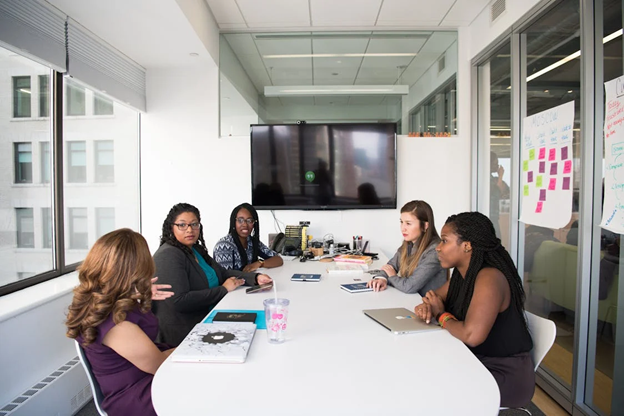Virtual Coffee vs. Traditional Meetings: Which Approach is More Effective
The work environment is undergoing significant changes, especially with the shift towards remote work, leading to a surge in virtual meetings. A recent statistic reveals that 66% of organizations now routinely utilize video conferencing software for their day-to-day operations. This shift raises questions about the effectiveness of traditional face-to-face meetings versus the newer, digital alternatives.
In this article, we will not only compare the practical aspects of each meeting type but also evaluate their psychological effects on participants. We will also examine virtual coffee sessions versus traditional meetings to determine which is more effective in different scenarios.
The Concept of Virtual Coffee Sessions
Virtual coffee sessions are designed as casual digital meetings that aim to recreate the casual, spontaneous interactions typical in office settings. These are usually relaxed, unscheduled calls, where team members can share personal stories or discuss work-related matters in a low-pressure environment.
The goal of virtual coffee sessions is to lower barriers and enhance a sense of inclusion among remote team members, potentially increasing morale and reinforcing the team’s connection to the organizational culture. The informal nature of these interactions often encourages more frequent communication, which can be particularly beneficial for continuity in projects and team dynamics.
Benefits
Virtual coffee meetings are prized for their convenience and flexibility. Participants can log in from anywhere, eliminating the need for travel and making it simpler to schedule brief interactions that accommodate varying schedules. These meetings are particularly beneficial for distributed teams, providing a flexible meeting option that contrasts with the fixed schedules of traditional meetings.
They also support the maintenance of interpersonal relationships, offering a venue for social interaction that can improve teamwork when the focus shifts to work-related discussions. Moreover, the reduction in travel not only saves time but also contributes to environmental sustainability by cutting down on carbon emissions associated with commuting.
Challenges
Virtual coffees, however, come with significant challenges, mainly related to technology. Unreliable internet connections or issues with compatibility can interrupt communication and disrupt the informal flow of conversation. The absence of direct interaction may erode the quality of personal connections, which are pivotal for cultivating strong bonds.
Subtleties in non-verbal indicators, such as facial expressions and body posture, often remain obscure in virtual environments, which can result in misunderstandings and feelings of estrangement. This diminished transparency in communication may lead to participant detachment, potentially undermining the success of the interaction overall.
The Dynamics of Traditional Meetings
Traditional meetings occur in a specific physical location, allowing for immediate and dynamic exchanges. This setting supports a degree of engagement that is challenging to replicate in a virtual format. Attendees can instantly react to both explicit and implicit signals, fostering more detailed exchanges that typically enhance brainstorming and problem-solving sessions.
The structured atmosphere of these meetings injects a degree of gravity and concentration, rendering them optimal for intricate decisions or extensive discussions. Additionally, the opportunity for in-person assembly can foster a collective drive and urgency, speeding up the decision-making process and improving the efficiency of problem resolution.
Benefits
Traditional, in-person meetings excel in fostering immediacy and connection among attendees. The physical presence of participants builds trust and strengthens relationships, essential elements for effective teamwork.
Additionally, being in the same room enhances collaborative dynamics, facilitates quicker consensus, and supports decisive actions. Traditional meetings often leave a lasting impression and ensure thorough involvement from participants, free from the disruptions that can plague virtual environments. They also allow for spontaneous side conversations, which can ignite creative thinking and a deeper grasp of group dynamics.
Challenges
However, the logistical demands of traditional meetings can overshadow their advantages. Coordinating these events requires aligning multiple calendars, securing meeting spaces, and arranging travel, all of which can drain time and financial resources. This logistical burden can be overwhelming for organizations with geographically dispersed teams.
The formal atmosphere of these gatherings may also stifle free-flowing discussions and restrict innovative thinking. Furthermore, the financial burden of these arrangements can be unsustainable, particularly for smaller organizations or those operating under tight budget constraints.
Comparative Analysis: Effectiveness in Different Scenarios
The suitability of virtual coffee sessions versus traditional meetings often hinges on the specific circumstances and objectives of the engagement. Virtual coffee sessions excel at facilitating regular updates and informal interactions, creating a relaxed setting that promotes group cohesion. On the other hand, traditional meetings provide the formal and engaged atmosphere needed for making strategic decisions or advancing complex projects.
Deciding between virtual and traditional settings requires careful consideration of the meeting’s requirements, participant preferences, and the strategic goals of the organization. It’s also crucial to account for the personal communication styles of team members, as some may prefer the convenience of virtual meetings, while others perform better in direct interactions.

Conclusion
Both virtual coffee sessions and conventional meetings carve out their distinct advantages while navigating unique challenges. Deciding on the appropriate meeting format hinges on a clear understanding of the objectives of the engagement and the interplay among team members. As the fabric of workplace interactions continues to evolve, weaving together the strengths of both digital and direct communication methods could serve as a cornerstone strategy to elevate team effectiveness and bolster morale.
Incorporating a mix of virtual and traditional elements could foster a more flexible and responsive communication framework. As you plan your next meeting, which approach will you select to serve your team’s needs and goals best?




